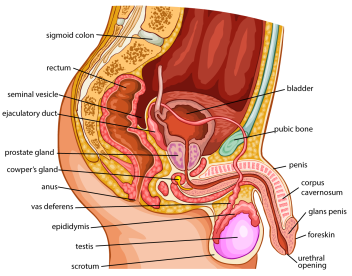Reproductive System Structure and Function
Reproductive system
The reproductive system controls the ability to reproduce which is necessary for perpetuation of the species.
Although the reproductive apparatus of males and females are different, the organs of both sexes may be divided into two groups: primary and accessory.
Primary organs:
- Gonads
- Male – testes
- Female – ovaries
Accessory organs:
- Ducts which provide for the transportation of germ cells
Male Reproductive system:
- Testes – function to produce spermatozoa and testosterone
- Male ducts
- Epididymis
- Within the testes collects immature sperm cells until they mature to swimming stage
- Vas deferens
- Seminal vesicle
- Produces fluid which nourishes sperm
- Ejaculatory duct – enters the prostate
- Prostate gland – produces alkaline secretion to neutralise vaginal acidity & receives triggers from the nervous system to ejaculate
- Urethra – expulsion of sperm
- Epididymis
Female Reproductive system:
- Ovaries – function – formation of ova until maturation & secretion of estrogen and progesterone
- Oviducts/fallopian tubes – function – conducts mature ova to uterus
- Uterus – function – storage structure for fetus to grow.
- Vagina – function – part of the birthing canal and reception of the penis
- Vulva – function – protection of neck of vagina
- Peritoneum – function – muscular supporting wall also know as the pelvic floor